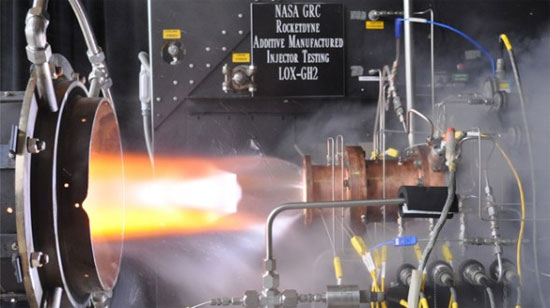NASA successfully launched missiles built by 3D printers
NASA has successfully tested the technology to significantly reduce the cost and time of making missiles.
NASA and Aerojet Rocketdyne have for the first time tested a rocket launcher model emulated from a 3D printing system. What you see in the picture below is what passed the test: The 3D rocket actually flew.

Although only a step by NASA in the process of creating a rocket launcher engine, this 3D printer is far superior to its peers. NASA uses lasers to melt many layers of metal powder into components that make up the rocket launcher. And if this test succeeds, NASA will soon apply it to create a 3D spacecraft model.
This technology not only saves time and effort in making missiles, it also minimizes mistakes that can damage the process of launching missiles into orbit. With this improvement, the time is reduced to half, and the cost is only 30%, when compared to the old manufacturing methods.
NASA said, they still have no plans to test these 3D models in launching them into space until 2017, but things are still going smoothly. If it becomes a reality, it is possible that one day, anyone can hold a travel ticket into space.
- NASA launched 5 missiles measuring wind speed in space
- SpaceX successfully launched Falcon 9 missiles
- Russia successfully tested missiles' unable to intercept
- Russia first tested space missiles since Soviet times
- University students surpass NASA, successfully launching missiles with 100% 3D printing engines
- NASA successfully launched the spacecraft to approach the Sun.
- Successfully launch the Pluto probe
- SpaceX successfully launched the world's most powerful missile
- SpaceX successfully launched the SES-9 satellite into orbit, failing to land missiles on barges
- Pakistan successfully tried stealth missiles
- SpaceX successfully landed the Falcon 9 rocket, the turning point of the aerospace industry
- America prepares to launch missiles at the moon
 Van Allen's belt and evidence that the Apollo 11 mission to the Moon was myth
Van Allen's belt and evidence that the Apollo 11 mission to the Moon was myth The levels of civilization in the universe (Kardashev scale)
The levels of civilization in the universe (Kardashev scale) Today Mars, the sun and the Earth are aligned
Today Mars, the sun and the Earth are aligned The Amazon owner announced a secret plan to build a space base for thousands of people
The Amazon owner announced a secret plan to build a space base for thousands of people